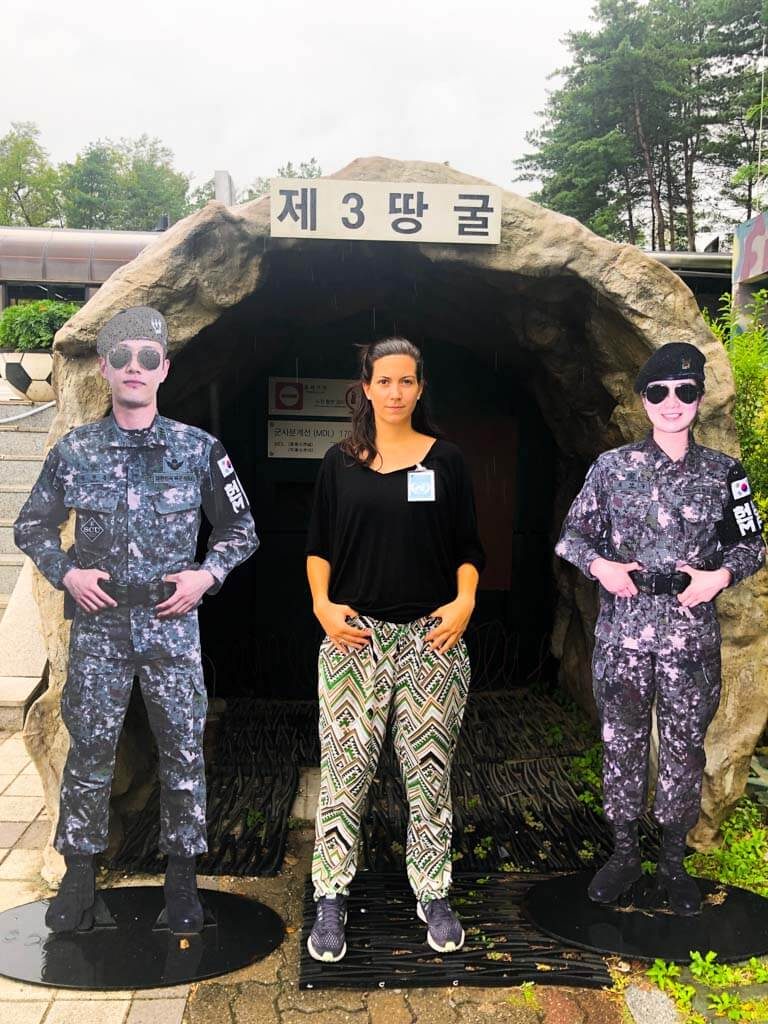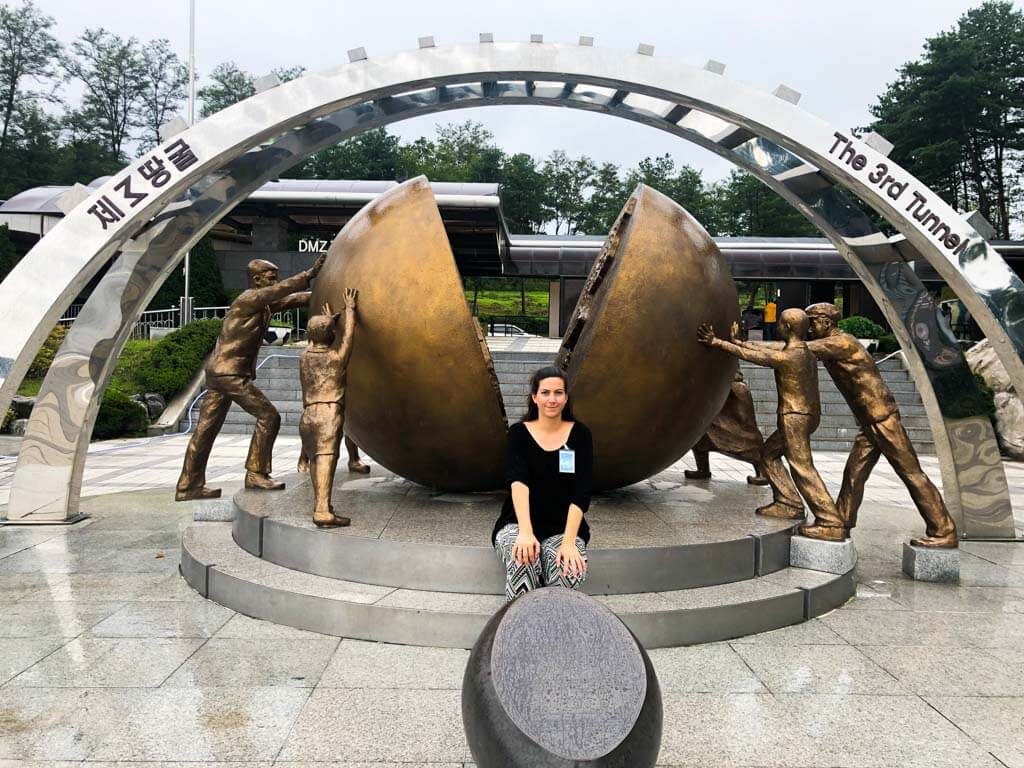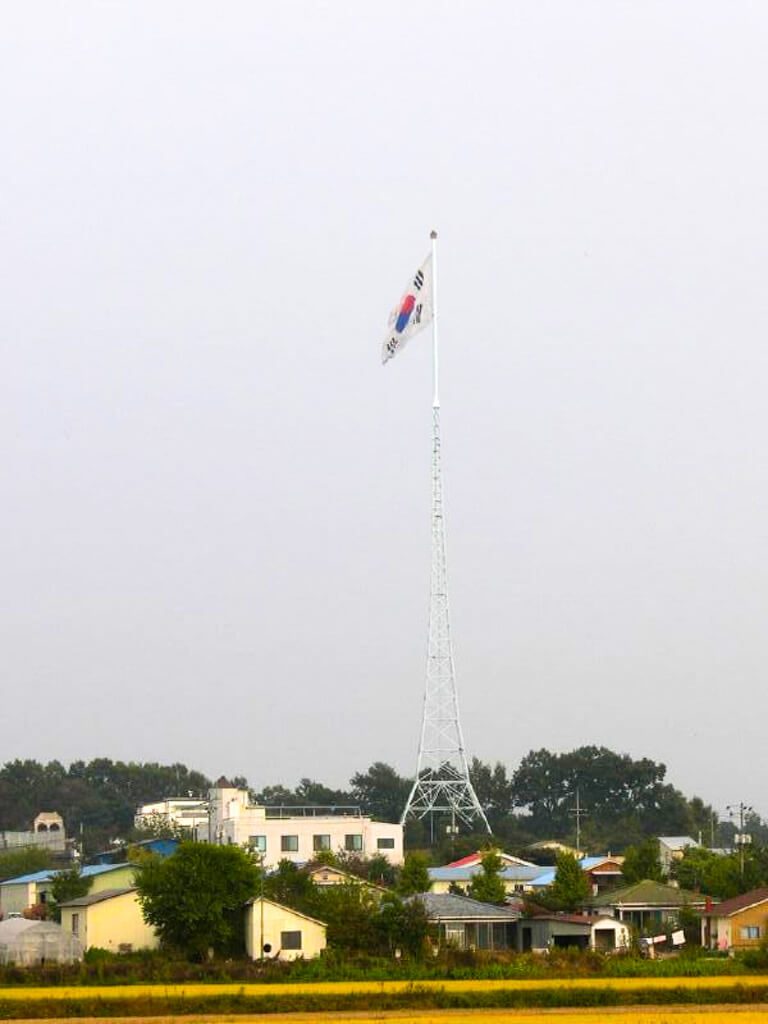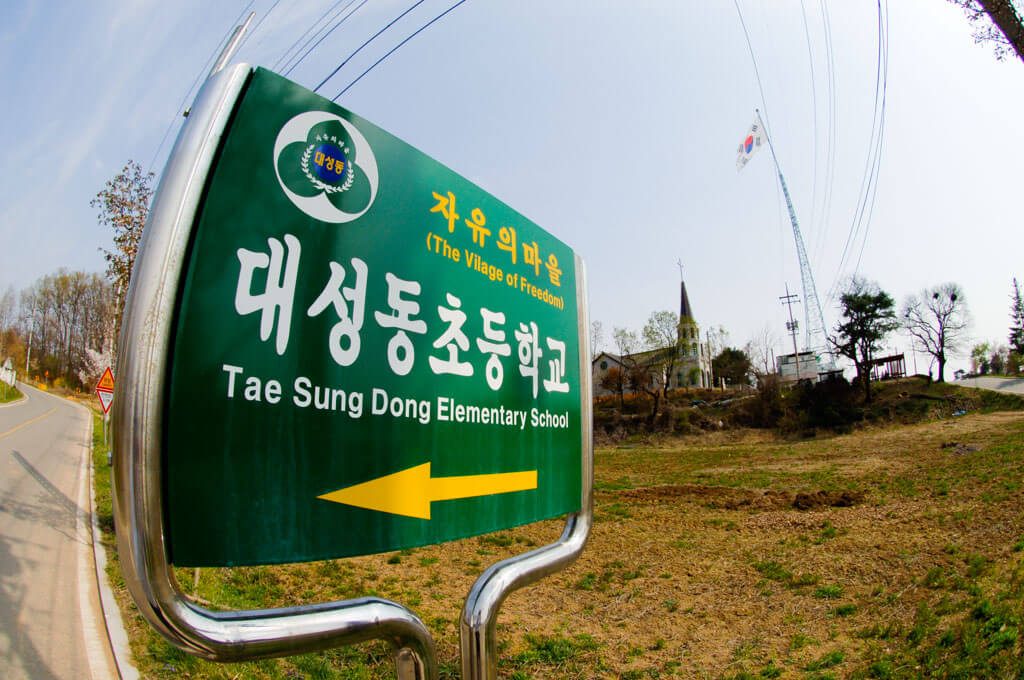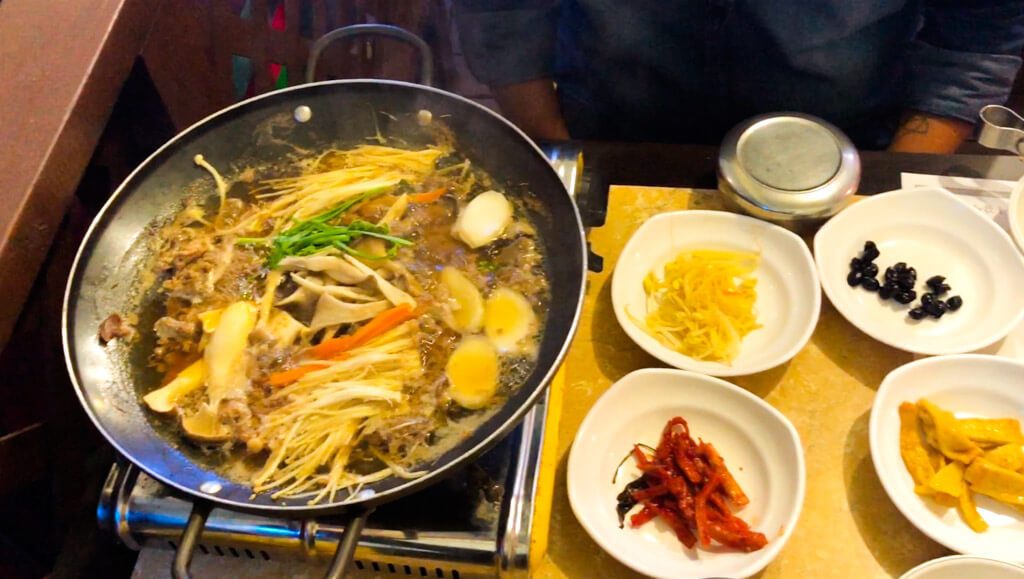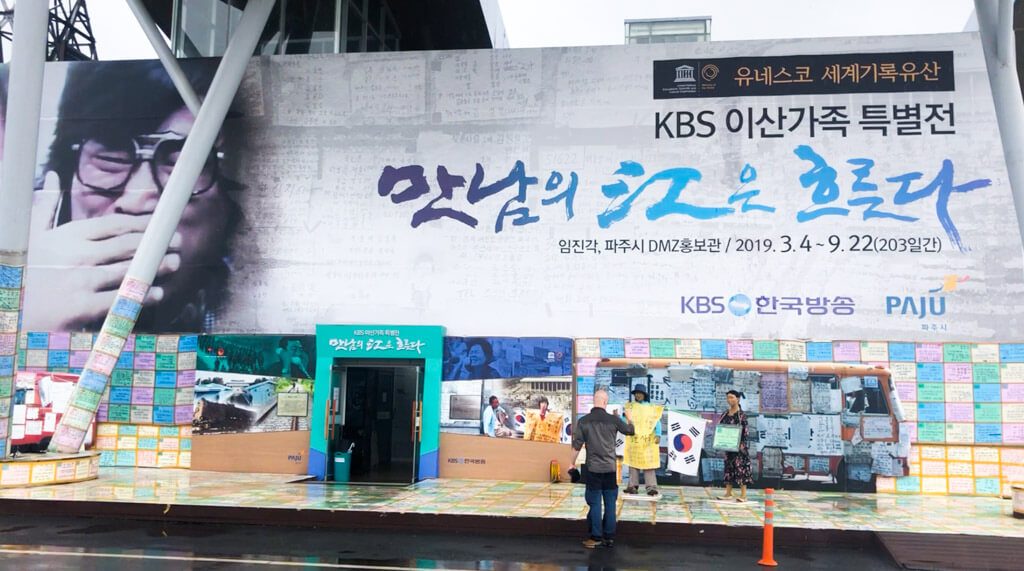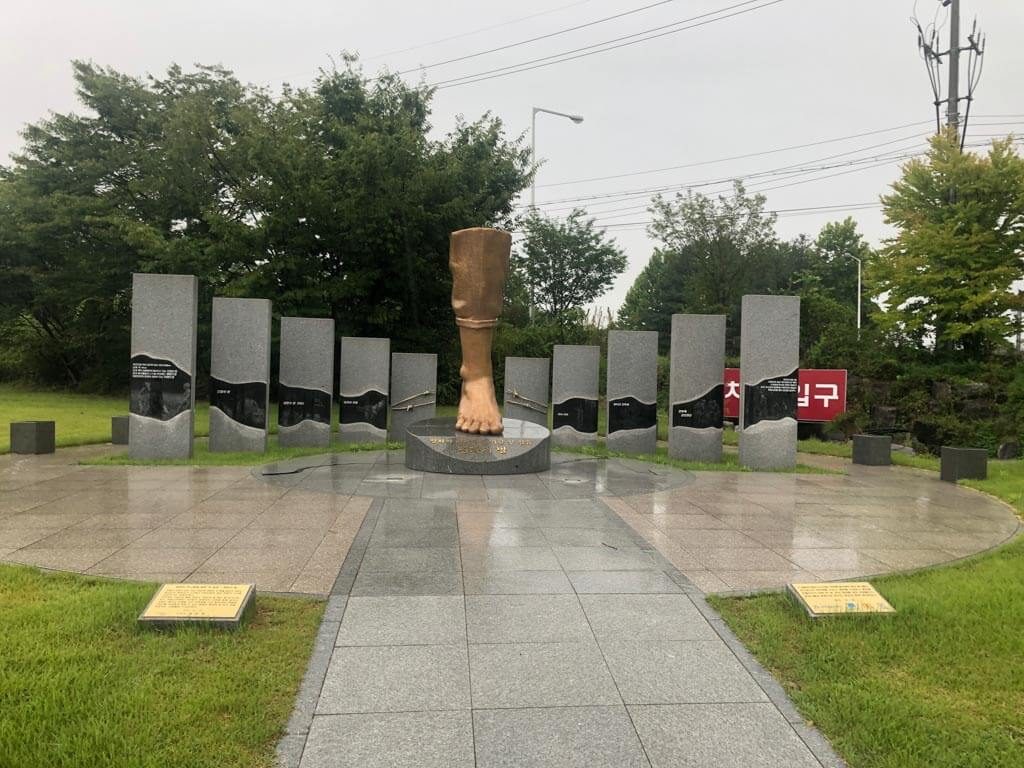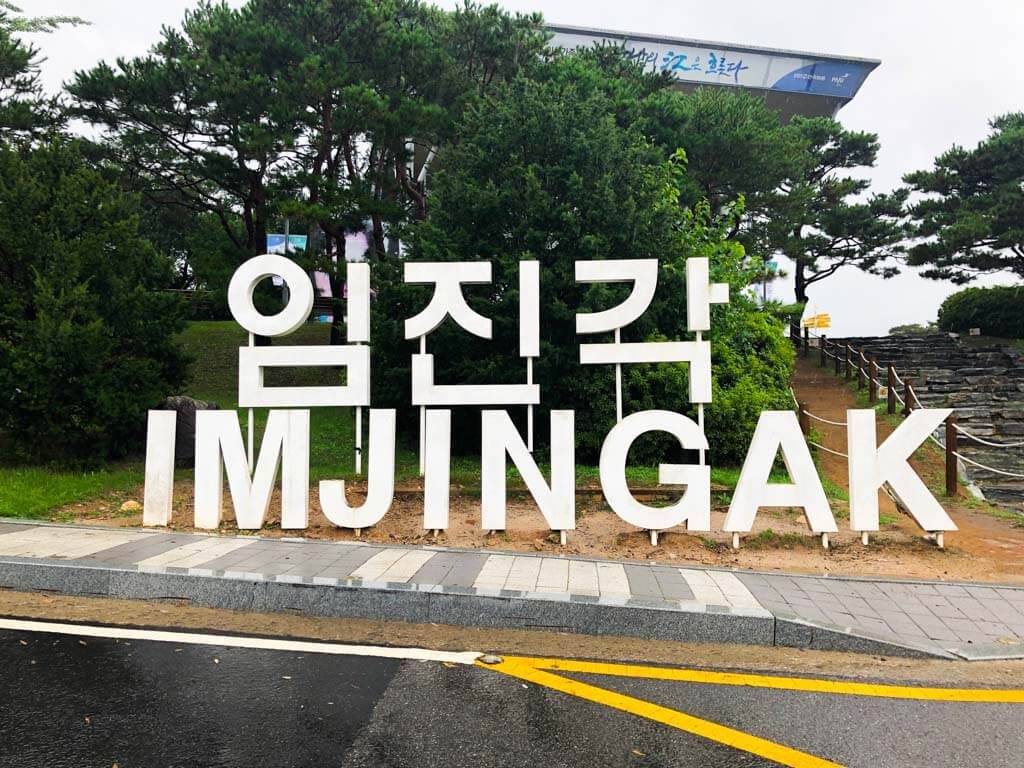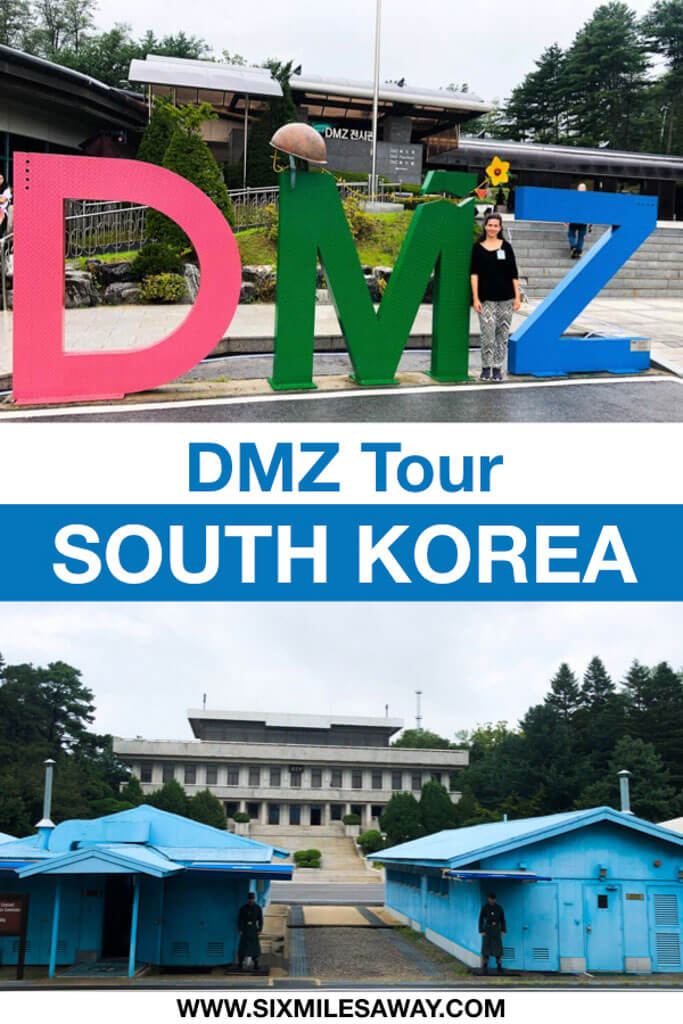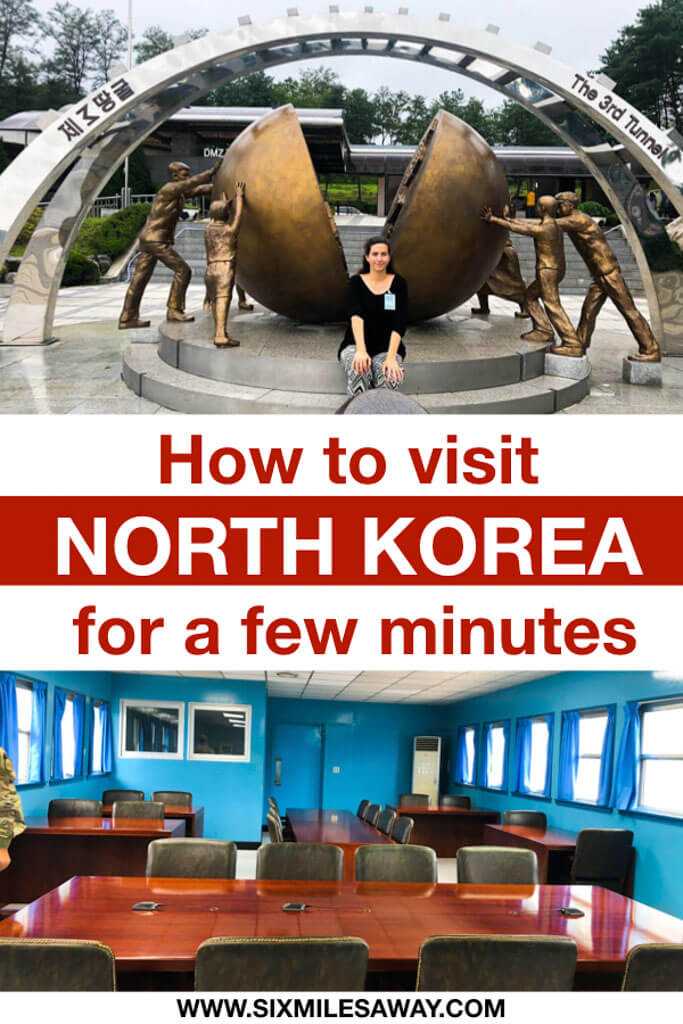One thing I have been really wanting to do was the DMZ tour in South Korea, including JSA (Joint Security Area). Let me explain to you in detail.
What is DMZ?
The DMZ basically is a 4km stretch of land that separates North Korea and South Korea all the way from east to west. South Korea basically owns the 2km to the south, and North Korea the 2km to the north. There is a line down the middle that divides those 2 countries, referred to as MDL (Military Demarcation Line).
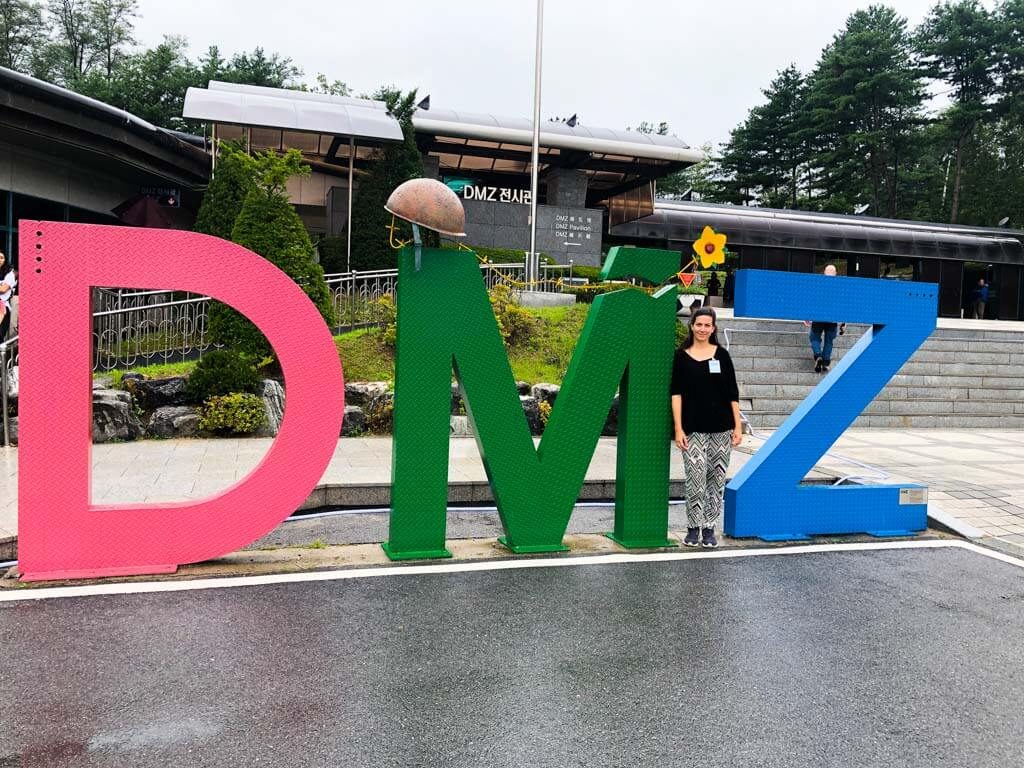
DMZ Tour in South Korea
Different DMZ Tour offers and providers
In order to visit the DMZ, you will need to book a tour. There is no way to enter this zone by yourself, as a military escort is needed.
There are tons of tour providers who offer this tour, so compare them beforehand and take the best offer. I choose KTB Tours and booked via GetYourGuide.
One thing you need to know is that you can also just do a DMZ tour in South Korea where you don’t enter the JSA. This is much cheaper and you will only visit the first 4 stops mentioned below.
I personally feel though that the experience is not complete and the same if you don’t enter JSA.
Fun Fact
North Korea also offers the exact same tours, just with the difference that it costs around 1000$. Isn’t that crazy?
Apparently, tourism is one way to get foreign money into the country. Most North Korean tourists are from China and Russia.
Furthermore, while on the South Korean side the tour guides and soldiers encourage you to ask anything you want to know, in North Korea you are not allowed to ask any questions.
Dress Code
The dress code for visiting the DMZ is rather strict, but also logic. You have to wear closed shoes. So, no flip flops or sandals are allowed. Your pants have to be long as well and cannot be ripped. Skirts and dresses have to be at least knee-long.
Basically, you should not look trashy or wear a shirt with an offensive slogan because North Korea uses photos as propaganda to say that other countries are too poor to afford clothes.
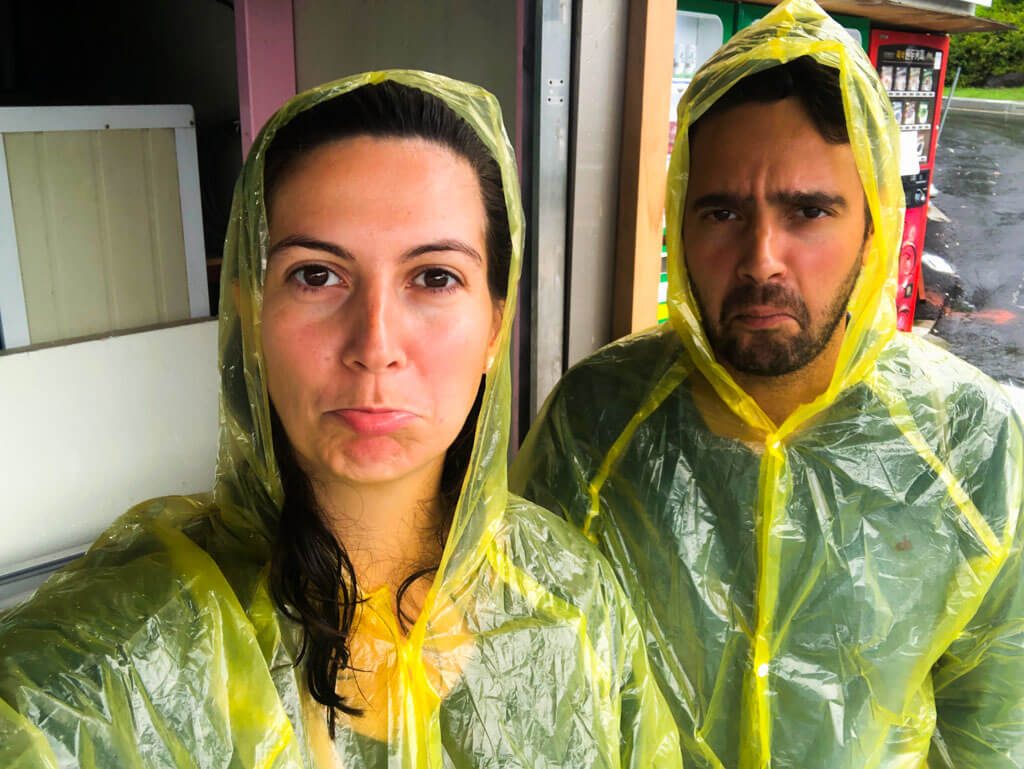
Our Stops during the DMZ tour in South Korea
1st Stop: Third Tunnel
The first stop during the DMZ tour in South Korea was about a 2h drive away from Seoul and will bring you to the Third Tunnel.
North Korea built multiple tunnels underneath the DMZ to attack South Korea. There are 4 tunnels in total that were found until today, and all lead to Seoul. The last one was only recently discovered in 1990, but it is believed that there are many more.
About 30.000 soldiers could have entered through these tunnels, per hour, if it hadn’t been discovered by South Korea and been used by North Korea. After confronting North Korea about these tunnels, they said that they were mining for coal and even made parts of the wall black to make it look like they were mining.
We couldn’t take photos in the Third Tunnel, but we were able to enter it. It took us around 10 min and was a pretty steep walk up and down. There were parts where you could still see spots where the dynamite was used.
2nd Stop: Dora Observatory
Our second stop during the DMZ tour in South Korea was the observatory platform, from where you can look over to North Korea. There are binoculars on the observatory platform which you can use for free.
You will see two peace villages, one on the South Korean and one on the North Korean side, which are the only villages allowed inside the DMZ.
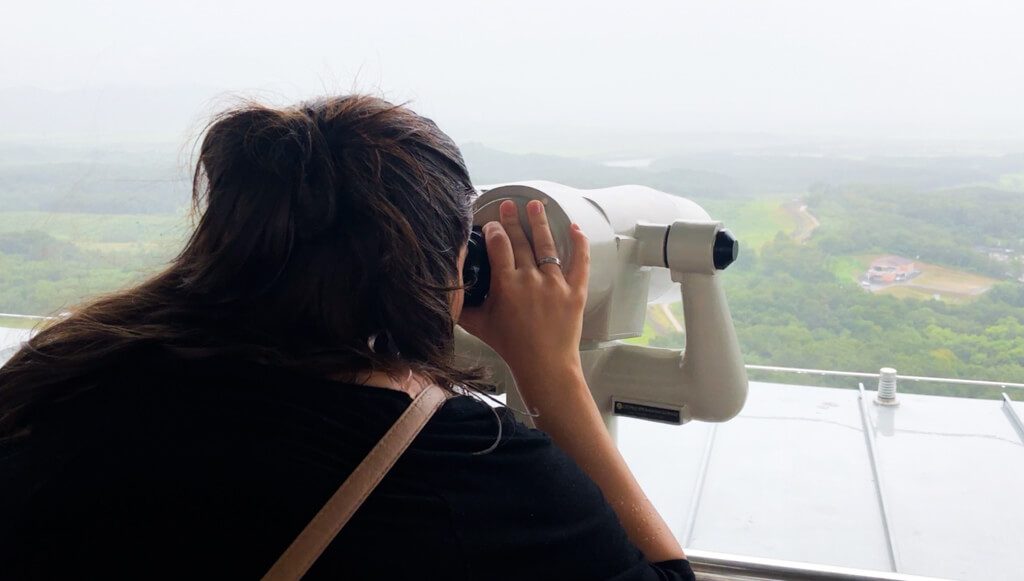
North Korea Freedom Village
On the North Korean side, you will see the peace village Kijong-dong – a propaganda village (fake) built by North Korea to encourage people to join their side. According to North Korea, 200 people live there and it has a school, kindergarten, hospital and so on.
Apparently, the windows of the houses are painted on the wall and are not real. The houses don’t even have floors as you can see the lights go dimmer as you look down. The houses are basically all empty. They also always turn on the lights in the same houses at the same time every day and have people walking around there to preserve the illusion of people living there. In reality, though, those people are from the army. Finally, they even play propaganda music via loudspeakers.
You will also see a flag pool which is around 160m tall on the North Korean side. They just built it to have a bigger flag pole than South Korea which was around 100m tall.
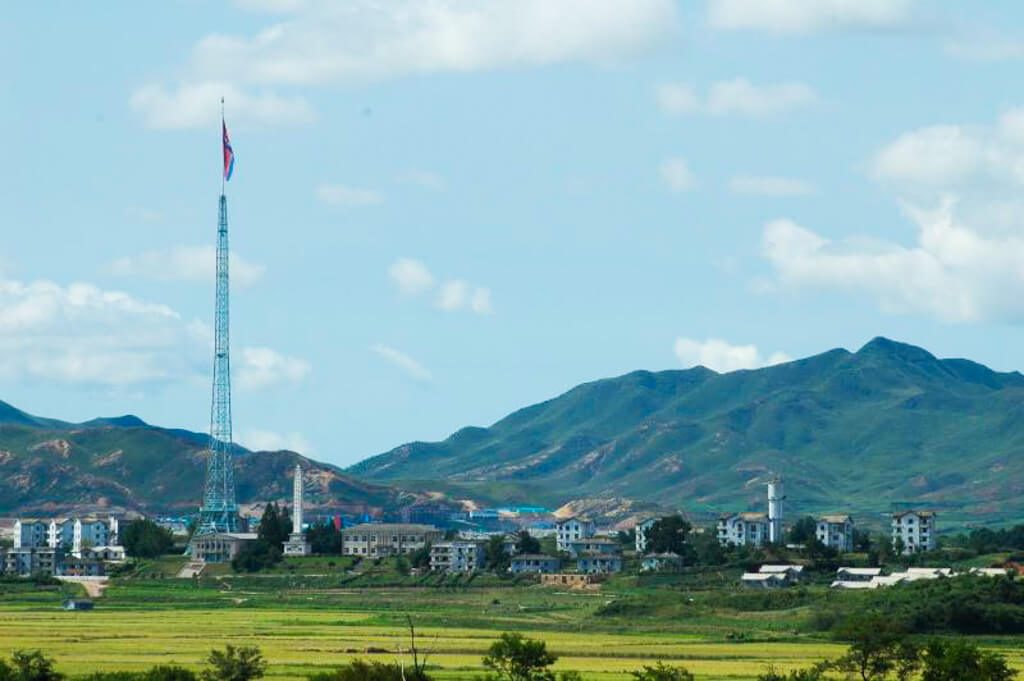
South Korea Freedom Village
On the South Korean side, you will see the peace village Daeseong-dong, just with the difference that people actually do live there.
Around 400 people live in this village, including a lot of retired military people, who have some unique benefits and restrictions. People who get to live in Daeseong-dong are people who had a residency in this area before the civil war when there was no DMZ yet.
There is one condition to live in this village: You will need to live there 8 months of the year, otherwise you will lose residency.
Since those people live inside the DMZ, they have a kind of curfew and can only enter and exit through the checkpoint between 8 am-11 pm Each time they will need to get their passports checked. Also, if they want to receive visitors, their visitors need to apply for a military escort 2 weeks in advance.
Some benefits of the residents are that they are exempt from taxation and national defense duties, and receive the highest income for farming in whole South Korea.
3rd stop: Dorasan Station
The third stop during the DMZ tour in South Korea was Dorasan Station. It is the most northern and last train station in South Korea which could theoretically bring you to the capital of North Korea.
Until today it is not really in use, but rather serves as a symbol of hope for Korean reunification. A lot of effort is being done in reuniting the train tracks to, hopefully, one day, be able to use them again.
At the Dorasan Station, you can pay an entrance ticket for about 1€ to see the unification platform and/or just get stamps.
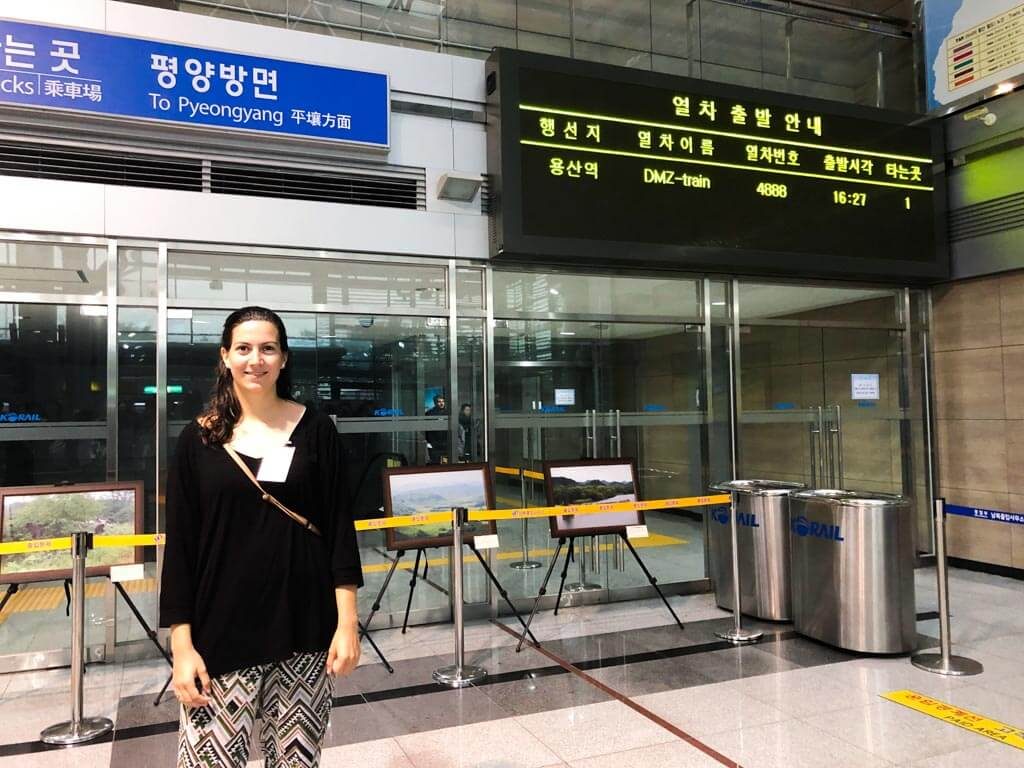
4th Stop: Imjingak Park and Lunch
The 4th stop during the DMZ tour in South Korea was at the Imjingak Park. There you will find lots of artwork and monuments related to the Korean war, such as a train that survived more than 1000 bullets, the Freedoms bridge where prisoners crossed for freedom after the war and much more.
We stayed in this park for 2h because we had lunch included in our tour ticket. We were served a super delicious Korean lunch with beef and different kinds of appetizers. For vegetarians and vegans, they also had options.
5th Stop: JSA (Joint Security Area)
Our last and probably most exciting stop during the whole DMZ tour in South Korea was JSA. The JSA (Joint Security Area) is the communication point for both sides where meetings and conferences are held.
The tour is held by American soldiers (United Nations Command) who are stationed there since South Korea and North Korea couldn’t find a solution themselves, the conflict was given over to the UN.
You are asked to leave all belongings on the bus, and only take your camera and private things, such as your wallet. This is rather for your own protection to not lose anything by accident there, as you cannot enter again to get it back.
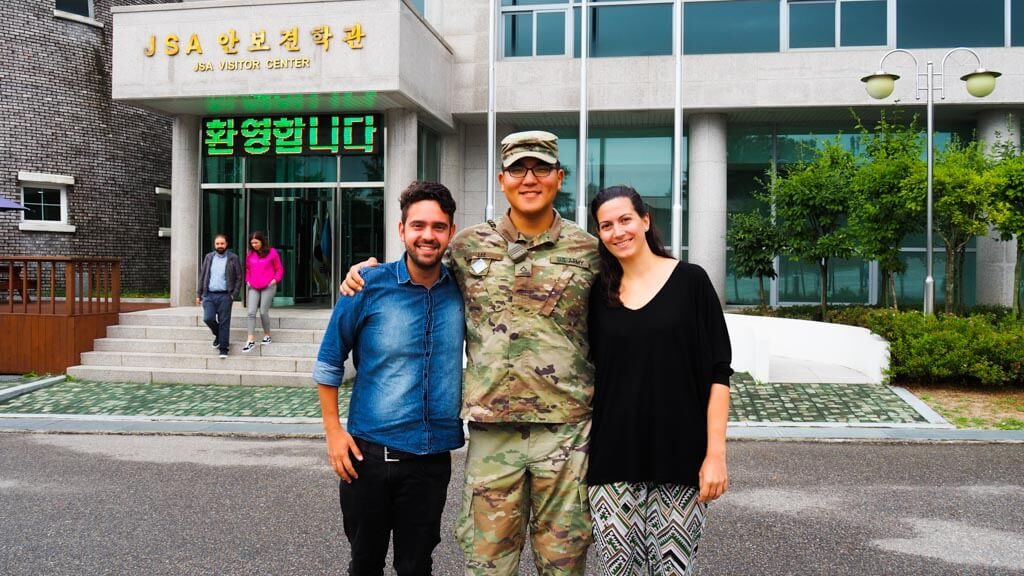
Freedoms House
When we arrived inside the JSA, we first watched a 15 min movie about history. Then we were driven to the freedoms house with the military bus first.
This house was originally built for the reunion of families from both sides but never used for this purpose because North Korea didn’t allow people to cross the border.
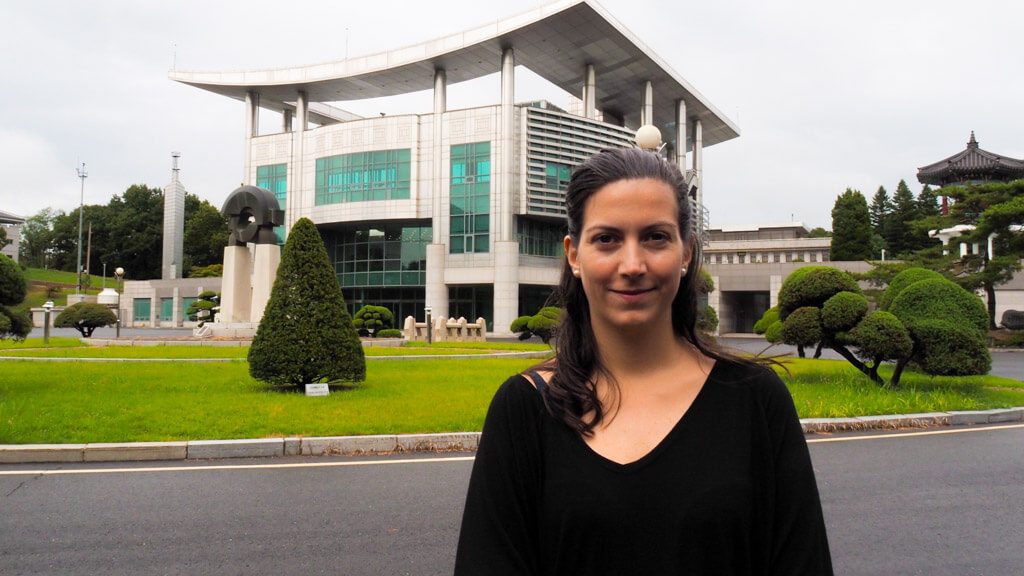
Conference Room
After the Freedoms House, we were brought to the famous conference room. The soldiers told us upfront that we should not point, wave or do any hand gestures as we are watched by North Korea all the time.
You will notice that some buildings are grey and others blue. The blue ones belong to South Korea and the grey ones to North Korea. North Korea’s buildings are also always bigger, including their Freedoms House.
Finally, you will also notice the concrete floor next to the conference room which looks different on both sides and basically marks the borderline.
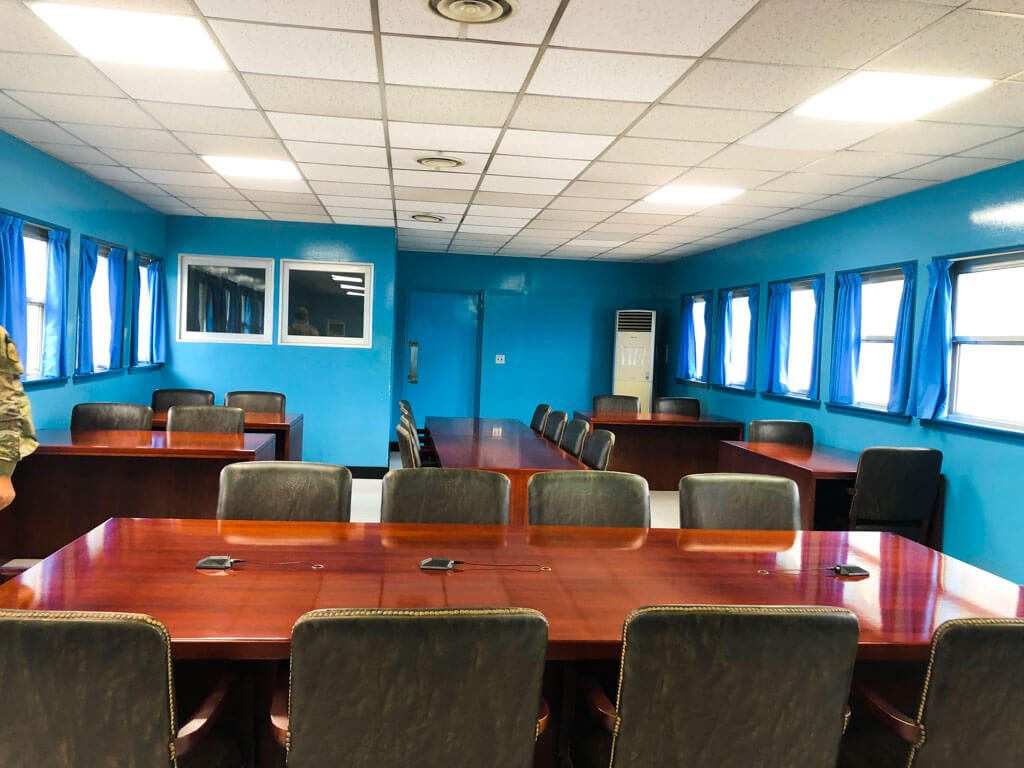
In this room, you have the one and only opportunity to cross the border and be in North Korea for a few minutes. The border is actually marked by a table in the middle of the room.
At the back of the room, you will see a blue door which is heavily guarded by a soldier as this door will bring you straight to North Korea. They were saying that if you go through this door there is nothing they can do for you. Obviously, they would prevent you from passing through that door in the first place.
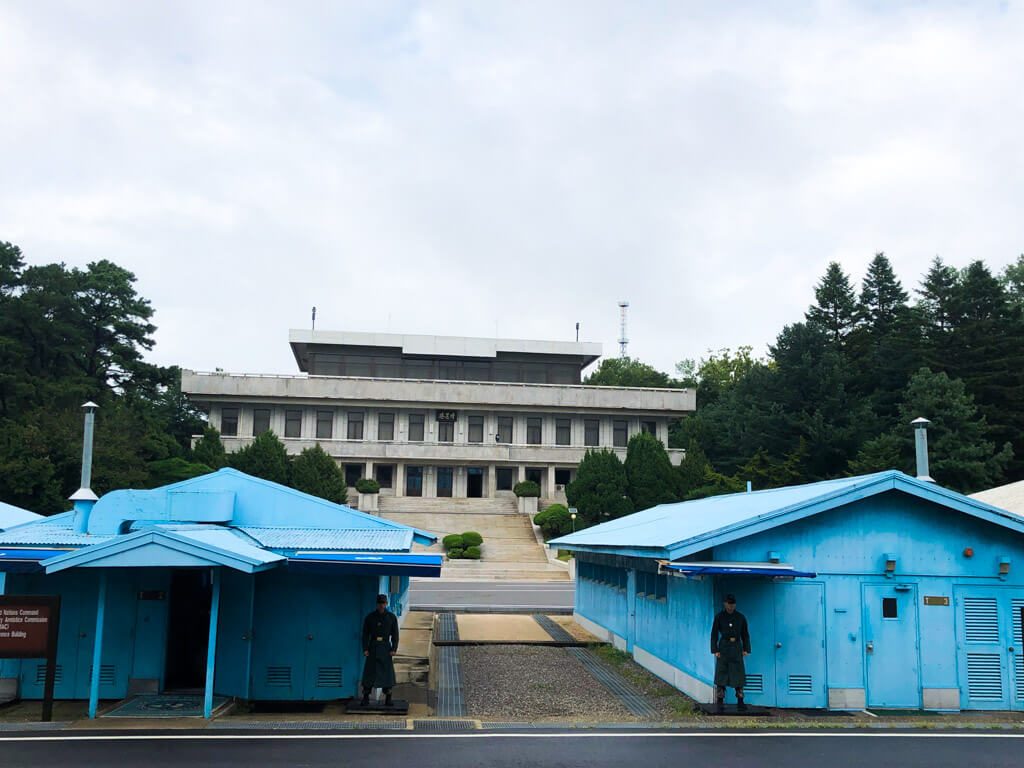
Outside the conference room, you usually can see North Korean and South Korean soldiers guarding their sides. However, the North Korean soldiers are not showing up a lot, only if they have meetings themselves.
Alright, that was the short history lesson about South Korea and North Korea. I hope you enjoyed this DMZ tour in South Korea and might book one as well when visiting Seoul.
Also, check out these 15 fun facts about South Korea before you visit and how to spend 24 hours in Seoul.



